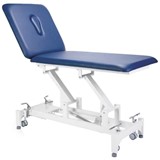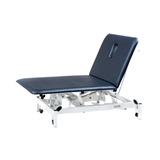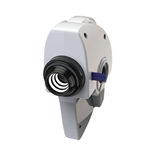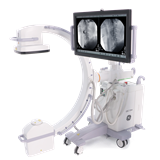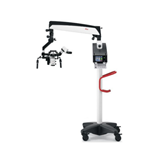“Our way of life, declining fertility and a rapidly ageing population are contributing to an enormous escalation in the number of people suffering from debilitating ‘lifestyle’ diseases, such as diabetes, heart disease, hypertension, osteoarthritis, and some cancers,” said Professor Andrew Coats, Dean of the University of Sydney’s Faculty of Medicine.
“In addition to posing significant challenges in terms of long term prevention and cure, there is an escalating strain on our health and welfare systems - buckling under the pressure to treat the medical and social problems of more and more patients suffering multiple, lifelong illnesses.
“By 2020, one third of us will be aged over 65, so we really need to start getting proactive now, and start planning for tomorrow’s solutions, today,” Professor Coats added.
While the health care systems of times past were set up to respond to acute illness, accident and infection, today’s health sector is undergoing momentous change, because the diseases of an ageing population are vastly different, ongoing and complex.
“If we’re going to be living until our 80s and 90s – and eventually beyond - relying upon medical advances alone to boost longevity will not be enough. The challenge will be to achieve a real increase not just in years of life, but productive and healthy years, otherwise, the resulting economic strain will have severe and long-lasting consequences for future generations,” Professor Coats warns.
The coming crisis is about more than just health care, it’s also a matter of economics.
“For a long time now we’ve been calling ourselves the clever country, but we’re still heavily reliant upon importing medical technology from overseas. Our growing elderly population comes at a significant cost, so it’s vital we begin to source our own health care solutions, and create intellectual property we can export instead. As developing countries with lower cost bases become increasingly competitive, we must move from a primary producing to a knowledge-based economy,” explains Professor Coats.
Enter Bio3, a unique, bold, and visionary initiative devised to respond to our future health care challenges. Bio3 aims to revolutionise the treatment of chronic and degenerative diseases, and provide quality of life for our greying population through the invention and development of new biophysical devices and artificial organs – from synthetic blood vessels to artificial eyes and lab-grown hearts.
Joint brainchild of Professor Richmond Jeremy, Associate Dean, Infrastructure and Finance, and Professors Hans Coster and Tony Weiss from the Faculty of Science, Bio3 will draw upon the exceptional breadth of skills and expertise of the University of Sydney’s physical, biological and clinical science researchers.
It will link their knowledge to develop, from laboratory to clinical trial, new treatments in the fields of: biomedical engineering and medical devices; tissue engineering; medical nanotechnology; and bio-sensing and health status monitoring.
“Bio3 is an incredibly ambitious project, of major international significance,” says Professor Coats. “Not long ago, it really would have been the stuff of medical student fantasy, or science-fiction film. It has the potential to make modern medicine look medieval in the space of just a decade or two. It really is a brave new world.”
And its vision is a grand one. It foresees that implanted electrodes will be able to restore movement to people paralysed by spinal cord injury, stroke or nerve damage by bypassing the brain and stimulating muscles directly.
It imagines that rather than undergo extensive, debilitating chemotherapy treatment for cancer, patients will pop a ‘smart pill’ which will seek and destroy cancer cells without compromising our immune systems.
It hopes that within our lifetime, medicine will be able to replace worn-out organs and limbs with brand-new versions – grown in a lab – which will be without the complications and anguish of transplant surgery and tissue rejection.
In fact, the Faculty of Medicine believes that by 2050, the average person aged over 75 will have several pieces of ‘bio-machinery’ implanted somewhere in their body. However getting to this stage will require considerable investment in pharmacology, bioengineering, tissue and organ replacement, and more.
“Investment in biotechnology isn’t new,” said Professor Coats, “but finding medical applications for advances in science, mathematics, physics, physiotherapy, chemistry and more is what will make Bio3 stand apart from other projects, and what will attract investors and commercial partners.”
In fact, Bio3’s commercial focus is almost more revolutionary than its scientific ambitions, particularly in the world of academia, where some have held the view that commercialisation and integrity cannot sit side by side.
However, the University of Sydney will be willingly joining with the private sector, government, venture capitalists and individuals to promote an understanding of the health and economic benefits of its research, and to ensure Bio3 is not just a visionary project, but one that translates research into real solutions for patients everywhere, through product development and marketing.
And though the Australian biotechnology industry is relatively small by global standards, the University of Sydney is using its size and multidisciplinarity to gain a strategic advantage over its American and European colleagues by ensuring an ideas interchange between widely differing approaches to a single problem.
“To achieve our goals we will physically bring together local and international experts from key disciplines, including commercial, into one building - a feat which would be near impossible in the larger but more single discipline orientated biotech communities overseas,” explained Professor Coats.
“Rather than operating independently, this close-knit community of people from different research backgrounds will allow venture capitalists, physical and medical scientists, engineers, chemists, students and other researchers to join together, share ideas, and design real solutions for very real problems.”
In fact, a network of Bio3 labs has already been established around the University, and the recruitment drive to attract high-flying researchers from around the world is underway. The Bio3 Research Building, which will eventually house the entire facility, won’t be ready for occupation for between three and five years, but it will be in a league of its own.
A cutting edge facility, Professor Coats explains that the building will be “a visually stimulating structure incorporating dry, wet and containment laboratory spaces, shared access to the very latest in hi-tech research equipment, business development offices and business ‘incubator’ facilities – all combining to attract world-class people to join the project. “
“It’s an extremely creative model, with incredible potential rewards for the University, the economy, and the health of people here and everywhere. We’re proud of our plans, and we’re excited by the many remarkable achievements we know are to come,” Professor Coats added.
- Suppliers
- New to MedicalSearch? Book a Demo
- Advertise with us
- Login
- Email Marketing
- Buyers
- Get Quotes
- Articles & Ideas
- Login
- Subscribe to newsletter
- My Details
- Get Quotes
- Accident & Emergency Care
- Aged Care & Disability
- Anaesthesia & Respiratory Care
- Beauty & Wellness
- Cardiology & Cardiac Surgery
- Commercial Cleaning & Laundry Supplies
- Dental Care & Oral Surgery
- Diagnostic Instruments & Medical Imaging
- Disinfection & Sterilisation
- ENT & Audiology
- Gynaecology & Obstetrics
- Homecare & Consumer Medical
- Hospital Equipment & Supplies
- Intensive Care Unit
- Laboratory & Pathology
- Medical Apparel
- Medical Devices & Products
- Medical Fridges & Freezers
- Medical Storage & Filing
- Medical Waste Management
- Optometry & Ophthalmology
- Orthopaedics & Podiatry
- Paediatrics & Neonatology
- Patient Monitoring & Management
- Physiotherapy & Rehabilitation
- PPE & Infection Control
- Single Use Medical Consumables
- Surgical Tools & Supplies
- Treatment Beds, Tables & Couches
- Veterinary Equipment
- Wheelchairs & Mobility Aids
- Get Quotes
- Accident & Emergency Care
- Aged Care & Disability
- Anaesthesia & Respiratory Care
- Beauty & Wellness
- Cardiology & Cardiac Surgery
- Commercial Cleaning & Laundry Supplies
- Dental Care & Oral Surgery
- Diagnostic Instruments & Medical Imaging
- Disinfection & Sterilisation
- ENT & Audiology
- Gynaecology & Obstetrics
- Homecare & Consumer Medical
- Hospital Equipment & Supplies
- Intensive Care Unit
- Laboratory & Pathology
- Medical Apparel
- Medical Devices & Products
- Medical Fridges & Freezers
- Medical Storage & Filing
- Medical Waste Management
- Optometry & Ophthalmology
- Orthopaedics & Podiatry
- Paediatrics & Neonatology
- Patient Monitoring & Management
- Physiotherapy & Rehabilitation
- PPE & Infection Control
- Single Use Medical Consumables
- Surgical Tools & Supplies
- Treatment Beds, Tables & Couches
- Veterinary Equipment
- Wheelchairs & Mobility Aids
Trusted by 520,000 Australian medical buyers
Buyers
- Discover products & solutions
- Login
- Subscribe To Newsletter
- Browse All Products
- Read Articles
Suppliers
Advertise
- Promote your products & solutions
- New to MedicalSearch? Book a Demo
- Login / Forgot Password
- Advertise Your Products
- Success Stories
- Email Marketing
- Suppliers
- Advertise with us
- Login
- Email Marketing
- Buyers
- Get Quotes
- Articles & Ideas
- Login
- Subscribe to newsletter
- My Details
Get Quotes
- Accident & Emergency Care
- Aged Care & Disability
- Anaesthesia & Respiratory Care
- Beauty & Wellness
- Cardiology & Cardiac Surgery
- Commercial Cleaning & Laundry Supplies
- Dental Care & Oral Surgery
- Diagnostic Instruments & Medical Imaging
- Disinfection & Sterilisation
- ENT & Audiology
- Gynaecology & Obstetrics
- Homecare & Consumer Medical
- Hospital Equipment & Supplies
- Intensive Care Unit
- Laboratory & Pathology
- Medical Apparel
- Medical Devices & Products
- Medical Fridges & Freezers
- Medical Storage & Filing
- Medical Waste Management
- Optometry & Ophthalmology
- Orthopaedics & Podiatry
- Paediatrics & Neonatology
- Patient Monitoring & Management
- Physiotherapy & Rehabilitation
- PPE & Infection Control
- Single Use Medical Consumables
- Surgical Tools & Supplies
- Treatment Beds, Tables & Couches
- Veterinary Equipment
- Wheelchairs & Mobility Aids
Get Quotes
- Accident & Emergency Care
- Aged Care & Disability
- Anaesthesia & Respiratory Care
- Beauty & Wellness
- Cardiology & Cardiac Surgery
- Commercial Cleaning & Laundry Supplies
- Dental Care & Oral Surgery
- Diagnostic Instruments & Medical Imaging
- Disinfection & Sterilisation
- ENT & Audiology
- Gynaecology & Obstetrics
- Homecare & Consumer Medical
- Hospital Equipment & Supplies
- Intensive Care Unit
- Laboratory & Pathology
- Medical Apparel
- Medical Devices & Products
- Medical Fridges & Freezers
- Medical Storage & Filing
- Medical Waste Management
- Optometry & Ophthalmology
- Orthopaedics & Podiatry
- Paediatrics & Neonatology
- Patient Monitoring & Management
- Physiotherapy & Rehabilitation
- PPE & Infection Control
- Single Use Medical Consumables
- Surgical Tools & Supplies
- Treatment Beds, Tables & Couches
- Veterinary Equipment
- Wheelchairs & Mobility Aids
Trusted by 520,000 Australian medical buyers







-160x160-state_article-rel-cat.png)
